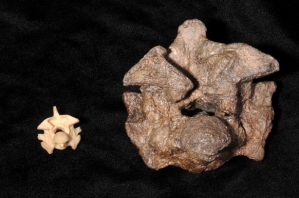Of my random meanderings around the Internet, I think the coolest thing I’ve seen this past week certainly has to be the Steampunk sequencer:

With that out of the way, here are some links:
- In somewhat keeping with the theme from some links 2’s look at primitive writing systems, comes a post from the excellent Not Exactly Rocket Science: An 60,000-year old artistic movement recorded in Ostrich egg shells.
- More on topic of writing systems is Kevin Mitchell’s post on Why Johnny can’t read (but Jane can). Essentially, the post is asking: why dyslexia is about twice as common in boys as in girls?
- Is synaesthesia a high-level brain power? I’m not sure, but that’s the question being asked over at New Scientist.
- Science Daily claims: Simple math explains dramatic beak shape variation in Darwin’s finches. Key paragraph: “Using digitization techniques, the researchers found that 14 distinct beak shapes, that at first glance look unrelated, could be categorized into three broader, group shapes. Despite the striking variety of sizes and shapes, mathematically, the beaks within a particular group only differ by their scales.”
- Pamelia Brown has 50 Fascinating Lectures All About Your Brain. I’ve only managed to watch one of the videos (see below), so I’m certain that there is at least one fascinating lecture…
- Be sure to check out the Kahn Academy — a not-for-profit organisation that provides some great educational resources. For those of you interested in demographics and the quantitative analysis of movement, then here’s a whole section on differential equations.
- Dormivigilia provides a brief overview of a paper examining the neural origins of handedness.
- Razib Kahn over at GNXP has an in-depth discussion about the convergent evolution of skin pigmentation: OCA2 makes East Asians white and Europeans blue.
- How reliable are fMRI results? Another question I’m not so sure about. However, Prefrontal.org has a full paper on providing something of an answer. The key sentence: “the results from fMRI research may be somewhat less reliable than many researchers implicitly believe.”
- Jonah Leher has a lengthy, interesting piece over at the New York Times, asking: Is depression an adaptation? Probably not. But for a more balanced perspective, read Neurocritic’s brilliant analysis of the topic.
- Laelaps writes about a paper claiming the discovery a 4,300 year old chimpanzee nut-cracking site: Uncovering the “Chimpanzee Stone Age”.
- Lastly, Jeff Elman, UCSD professor of cognitive science and co-director of the Kavli Institute for Brain and Mind, presents a lecture on some of the latest research in our ability to use language and why it is so far removed from other animal communication systems:


